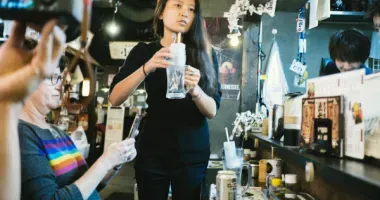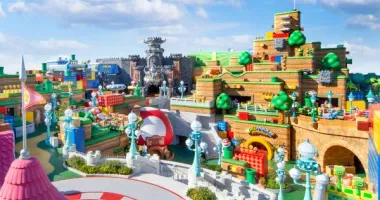Sasayama 篠山
A Green Detour
Breweries, fresh Japanese food shops and the remains of an ancient castle: Sasayama has a lot going for it.
The only time Sasayama entered history dates back to the seventeenth century when Tokugawa Ieyasu built a castle and left it in the care of his vassals, the Aoyama.
Since then time has passed by quietly in the village. The residents take great pride in the proven quality of their Japanese agricultural products: red (azuki) and black (kuromame) beans, sake, and matsuzake mushrooms.
The local specialty, boar stew, is enjoyed with the local sake, produced by Tamba brewery and Homei brewery. These two facilities date back to the eighteenth century and continue their productions with the original hardware, albeit with some minor changes.
Homei brewery now brews its sake to classical music so that the harmonious vibrations refine the final taste.
Sasayama naturally started specializing in green tourism, with Japanese tourists coming to enjoy the natural taste of the products of Okashino no Sato, a traditional Japanese produce shop, as a nice green getaway from Osaka and Kobe.
There is also a house with a thatched roof on top of a hill, Yakushisan Sanso, which offers tasty treats and specialties for walkers.
Sasayama also houses several onsen and ryokan. You will not find anything fancy, but instead, an authentic and intimate experience.
Tamba, the homeland of ceramics
The place is also known for being the heart of the production of Tambayaki, a very ancient Japanese ceramic style.
You can visit the pottery kilns and Tamba Kotokan, the local museum where the most beautiful pieces are exhibited: round, blackened for 60 hours, and inimitable.
Samurai lords and countrymen
Visitors usually end their tour of Sasayama by visiting the ruins of Sasayama Castle, known as Oshoin.
This building is striking for its simple elegance. Other traces of the past of the village, Anmas Bukeyashiki is one of the last homes of samurai countrymen to still exist. The Anmas were small vassals of the local lords and lived in houses with thatched roof. The one that remains today is completely intact and still warm.
Finally, Sasayama provides a valuable step for those wishing t to travel around Japan's countryside, far from the usual tourist spots, closer to people and nature.





























